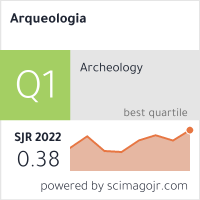Social organization and Late Intermediate settlements in Santa María Valley: paths and problems for analysis
Keywords:
Social organization, Settlement archaeology, Santa María valley, Late Intermediate Period
Abstract
The theme of social organization of ancient populations plays a central role in the archeology of settlements. In this paper we seek to examine how theoretical assumptions about pre-capitalist societies’ organization can be articulated with empirical evidence of the Late Intermediate Period in Santa Maria Valley. In order to explore the challenges and problems facing their empirical study, we have extracted two specific aspects – settlement hierarchies and residential segregation- from theoretical literature. We exemplify with cases from Sierra del Cajón (Catamarca and Tucumán provinces) facing, on one hand, the close relationship between settlement hierarchies with settlement patterns and catchment areas; and on the other hand, regarding the existence of residential segregation, the need to develop detailed architecture’s observations.Downloads
Download data is not yet available.
How to Cite
Coll Moritan, V., & Nastri, J. (1). Social organization and Late Intermediate settlements in Santa María Valley: paths and problems for analysis. Arqueología, 21(3), 67-87. https://doi.org/10.34096/arqueologia.t21.n0.2377
Section
Articles
Authors who publish in this journal agree to the following conditions:
- Authors retain copyright and yield to the journal right of first publication with the work registered with attribution license Creative Commons, which allows third parties to use the published always mentioning the authorship of the work and first publication in this magazine.
- Authors can make other independent and additional contractual arrangements for the non-exclusive distribution of the version of the article published in this issue (p. Eg., Inclusion in an institutional repository or publish it in a book), provided that clearly indicate that the work was published for the first time in this magazine.
- It allows and encourages the author / s to publish their work online (eg institutional or personal pages) before and during the process of revision and publication, as it can lead to productive exchanges and greater and more rapid dissemination of work published (See The Effect of Open Access).





(1)13.png)






1.jpg)
1.jpg)


13.png)
1.png)


(1)1.png)









